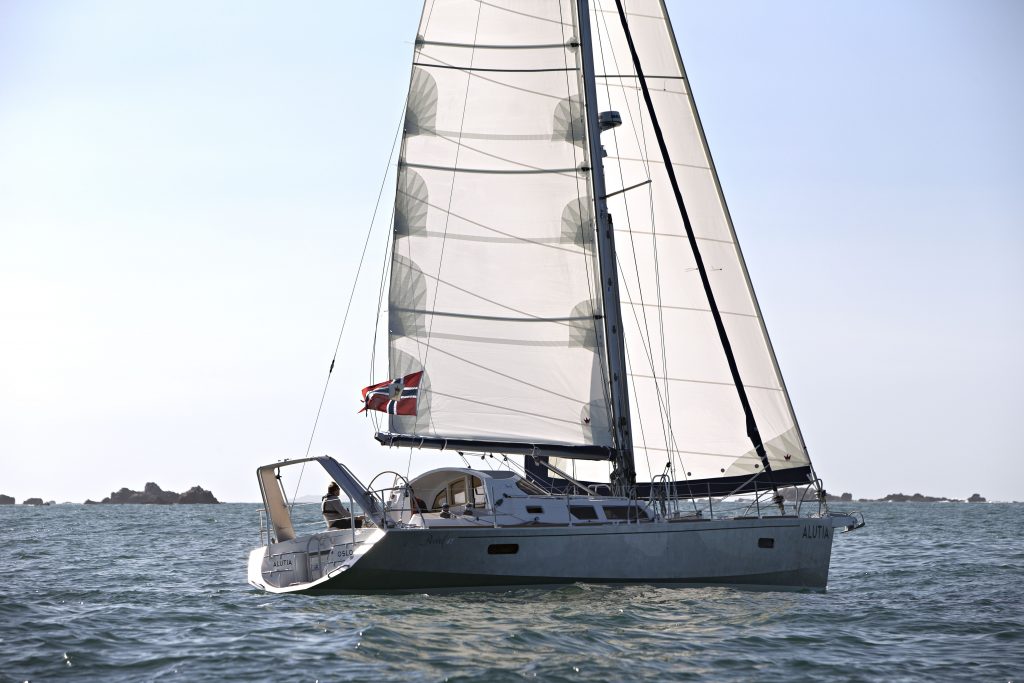
Verftets hjemmeside: www.boreal-yachts.com
At Boréal the answers to your questions will be based on firsthand experience !
From their own experiences and feedbacks from their clients, Boréal has gained a rare insight about long distance cruising.
Although all the calculations concerning structure and stability are double checked by international engineering offices, it is Jean-François Delvoye who is at the heart of the conception of the different Borealis.
Even if aluminum is not an imperative for blue water cruising, it seems to be the most adequate material. Its exceptional capacity to deform without breaking gives a crew the most chances to stay unharmed in case of a major accident. And for sure while travelling, one day you will hit something: a container, a whale, unidentified floating objects or a rock…
From a more technical point of view:
The hulls of Boréal are made of aluminum 5086 and 5083 with triple chines on floating frame and rails.
The plate thickness are as followed : bottom plate and keel : 12 mm, lower chine : 8 mm, middle and highest chine : 5 mm and deck : 4 mm.
We pay particular attention to our welds… and don’t have to use the artifacts of fillers to compensate poor welding.
The construction includes an ice ice-breaker stem and two watertight bulkheads, one at the front, one at the back. All our hulls are insulated without any heat bridges and we use double glass.
The shape of the hull is modern with rather narrow entries into water, tensed lines at the front, a big but not extreme beam, and a carrying rear.
The hull is balanced and undergoes little deformation when heeling.
The keel embryo has several functions:
It allows beaching and drying out without resting on the bottom plate.
It is an anti-drift surface increasing course stability.
It effectively protects propeller and rudder.
It lowers the gravity center of the boat (engine, ballast, batteries and diesel tanks are in the keel).
One center board and two dagger boards at the rear.
The NACA profiled center board increases the boat’s draught from 1m15 to 3m15 (Boréal 52). Changing the board’s angle moves the anti-drift center forward and backwards, which contributes to help balancing the rudder.
The two 14° inclination and 4,5° incidence dagger boards at the back, help balancing the boat going windward and ease the autopilot… This is done by playing on the height of the immerged (downwind) dagger board.
Going downwind, centre board (almost completely) up and the two dagger boards down, the boat is as on rails, gentle and pleasant to steer.
A lot of work has been done to center the weights and lower the gravity centre of the boat. The chain locker (up to 250 kg of chain) is at the mast foot.
The chain goes below the deck through a tube from the bow to the locker.
The engine and the batteries are in the keel, placing the CG of the boat 400 mm below the water line and about 1400 mm more forward than in case of its “classic” alternative.
The ballast is as well housed in the keel. Compared to a center boarder, this again lowers the Cg of several dozens of cm. Unlike what is usually done, we don’t pile up led bricks.
At Boreal we made moulds of every compartment and we make massive blocks for each of them, resulting in a gain of 20 % in density.
All this efforts contribute to an interesting stability curve.